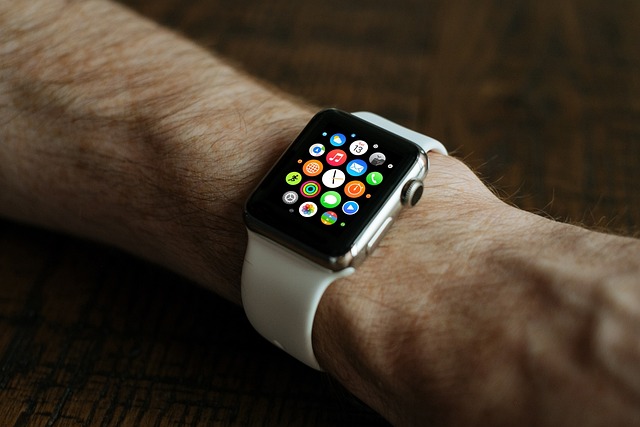The Apple Watch's battery health can be assessed using the Battery Health feature, which indicates both the current battery capacity and performance under heavy usage. It's crucial to monitor these metrics, as a drop below 80% of original capacity and failing to meet at least 60% of maximum capacity during intense tasks are signs that it might be time to replace your Apple Watch battery. Regular checks help prevent unexpected power loss and ensure the watch operates consistently for an extended period. Post-replacement, adopting power-saving strategies like activating Power Saving Mode, enabling automatic software updates, simplifying your watch face, adjusting screen brightness, and managing features like Always On is recommended to optimize battery life. Consistent charging after replacements and protecting the device from physical damage and extreme temperatures are also vital for recalibrating the battery and maintaining health metrics accurately. By keeping the software up-to-date and following maintenance practices, you can extend the lifespan of your Apple Watch and ensure it remains a reliable tool for tracking your health and staying connected with your digital life. Remember, proactive management and timely updates are key to preserving your Apple Watch's functionality over time. If battery conservation efforts are ineffective, consider replacing the battery at an authorized service provider, which often includes a back crystal replacement and device cleaning to enhance performance.
When your Apple Watch signals it’s time to replace its battery, you might think the journey ends there. On the contrary, extending your device’s lifespan begins with this pivotal step. This article offers a comprehensive guide on understanding battery health and replacement criteria for your Apple Watch, followed by actionable tips to maximize its battery life post-replacement. We delve into essential maintenance practices that can prolong its service lifespan and explore software optimization techniques to enhance efficiency and battery performance. Whether you’re a tech aficionado or new to the Apple ecosystem, these insights on replacing your Apple Watch battery responsibly will keep your watch ticking for years to come.
- Understanding Apple Watch Battery Health and Replacement Criteria
- Tips for Maximizing Battery Life After an Apple Watch Battery Replacement
- Maintenance Best Practices to Prolong Your Apple Watch's Service Lifespan Post-Replacement
- Software Optimization for Enhanced Efficiency and Battery Performance on Your Apple Watch
Understanding Apple Watch Battery Health and Replacement Criteria

When addressing the longevity of your Apple Watch, grasping the nuances of its battery health is pivotal. Apple’s design incorporates a lithium-ion battery that typically exhibits an ageing pattern over time. To gauge the condition of your watch’s battery, the Apple Watch software provides a Battery Health feature. This tool evaluates the maximum capacity and peak performance of the battery, offering insights into whether it’s operating within expected parameters or if it’s time to consider replacing apple watch battery. The Battery Health interface displays an estimation of the battery’s ability to hold a charge relative to when it was new, denoted as a percentage. This metric is crucial for deciding when to replace the battery, as a significant drop may indicate its lifecycle is nearing its end. Moreover, the feature assesses whether the battery delivers peak performance when under heavy workloads. When the battery’s capacity falls below 80% of its original capacity or if it fails to maintain peak performance for at least 60%, Apple suggests replacing apple watch battery. This ensures your device operates efficiently and maintains its functionality for an extended period, thereby enhancing the lifespan of your Apple Watch. Regularly checking these metrics can prevent unexpected power issues and help you plan for a replacement if necessary, ensuring your device remains reliable and ready for use.
Tips for Maximizing Battery Life After an Apple Watch Battery Replacement

When your Apple Watch’s battery life starts to wane, replacing it can breathe new life into your device. To ensure the longevity of your Apple Watch after a battery replacement, it’s crucial to adopt practices that optimize power usage. Firstly, enable the Power Saving Mode feature in the watch settings; this mode disables wireless communication and heart rate sensors to save energy when needed. Additionally, regular software updates can improve system efficiency and battery performance. Keep your Apple Watch up-to-date by enabling automatic updates through your paired iPhone.
Furthermore, customizing which complications and apps appear on your watch face can reduce unnecessary drain. Opt for a simpler, less interactive watch face to minimize the energy consumed by the screen. Similarly, be mindful of how often you use features like Always On and raising your wrist to activate the display; these can significantly impact battery life. Dimming the screen’s brightness to the lowest comfortable level also contributes to extending your Apple Watch’s battery life after a replacement. Regularly monitoring your watch’s power consumption and adjusting settings accordingly can ensure that you get the most out of your newly replaced battery.
Maintenance Best Practices to Prolong Your Apple Watch's Service Lifespan Post-Replacement

Regular maintenance is pivotal for ensuring your Apple Watch operates at its best, especially after a battery replacement. Post-replacement care begins with understanding the role of the new battery and how it affects your watch’s performance. A fresh battery typically restores peak efficiency but requires a period of calibration to align with your usage patterns. To maximize your Apple Watch’s service lifespan following battery servicing, it’s advisable to charge it consistently. Consistent charging helps the battery to remember its optimal operating voltage, which in turn enhances its longevity and accuracy in tracking health metrics.
Furthermore, protecting your Apple Watch from daily wear and tear is a crucial aspect of maintenance after a battery replacement. This includes using screen protectors to prevent scratches, keeping the device away from extreme temperatures, and ensuring it’s dry before charging if it gets wet. Regular software updates are also instrumental in maintaining optimal performance; these updates can improve battery life, fix bugs, and add new features that can further extend your Apple Watch’s usefulness. By adhering to these best practices for maintenance, you can significantly prolong the service lifespan of your Apple Watch after a battery replacement, ensuring it remains a reliable companion for years to come. Remember to handle your device with care, keep it updated, and provide it with the necessary TLC to enjoy its full potential.
Software Optimization for Enhanced Efficiency and Battery Performance on Your Apple Watch

When your Apple Watch begins to show signs of slower performance or reduced battery life, it’s often a cue that system optimization is needed. Regularly updating your watchOS ensures that your device operates at peak efficiency. The software updates from Apple are designed to improve overall performance and can include enhancements for battery longevity. For instance, the latest update might introduce new power-saving features or more efficient algorithms that reduce unnecessary background activity. To maximize these benefits, it’s advisable to keep your Apple Watch updated with the latest watchOS version. Additionally, customizing your watch face and app arrangements can contribute to better battery management. Opt for watch faces that consume less energy, such as those with simpler designs, and organize apps to prioritize those you use most frequently. This way, the system can allocate resources more effectively, leading to a healthier battery and an improved user experience. If your Apple Watch still struggles with battery life after these optimizations, it might be time to consider a replacement battery service from an authorized Apple service provider. This service not only extends the lifespan of your device but also often includes a new back crystal and a comprehensive cleaning of the casing and electronics, which can further enhance performance and battery efficiency. By regularly updating software, optimizing app usage, and ensuring your Apple Watch’s hardware is in top condition through professional maintenance or replacement when necessary, you can maintain its vitality and ensure it serves you reliably for years to come.
In concluding our discussion, it’s clear that replacing an Apple Watch battery can breathe new life into your device, but the key to extending its service lifespan lies in a combination of understanding battery health and replacement criteria, adopting best practices for maintenance, optimizing software for efficiency, and employing strategies to maximize battery life post-replacement. By following the tips outlined in this article—from tailoring your Apple Watch’s settings for better performance to regular checks on its battery status—you can ensure your watch continues to serve as a reliable companion for years to come. Remember, maintaining your Apple Watch after a battery replacement is not just about prolonging its life; it’s about enhancing your daily experience with the device. Replacing an Apple Watch battery when necessary is just the beginning; caring for it thereafter is what truly makes a difference.
